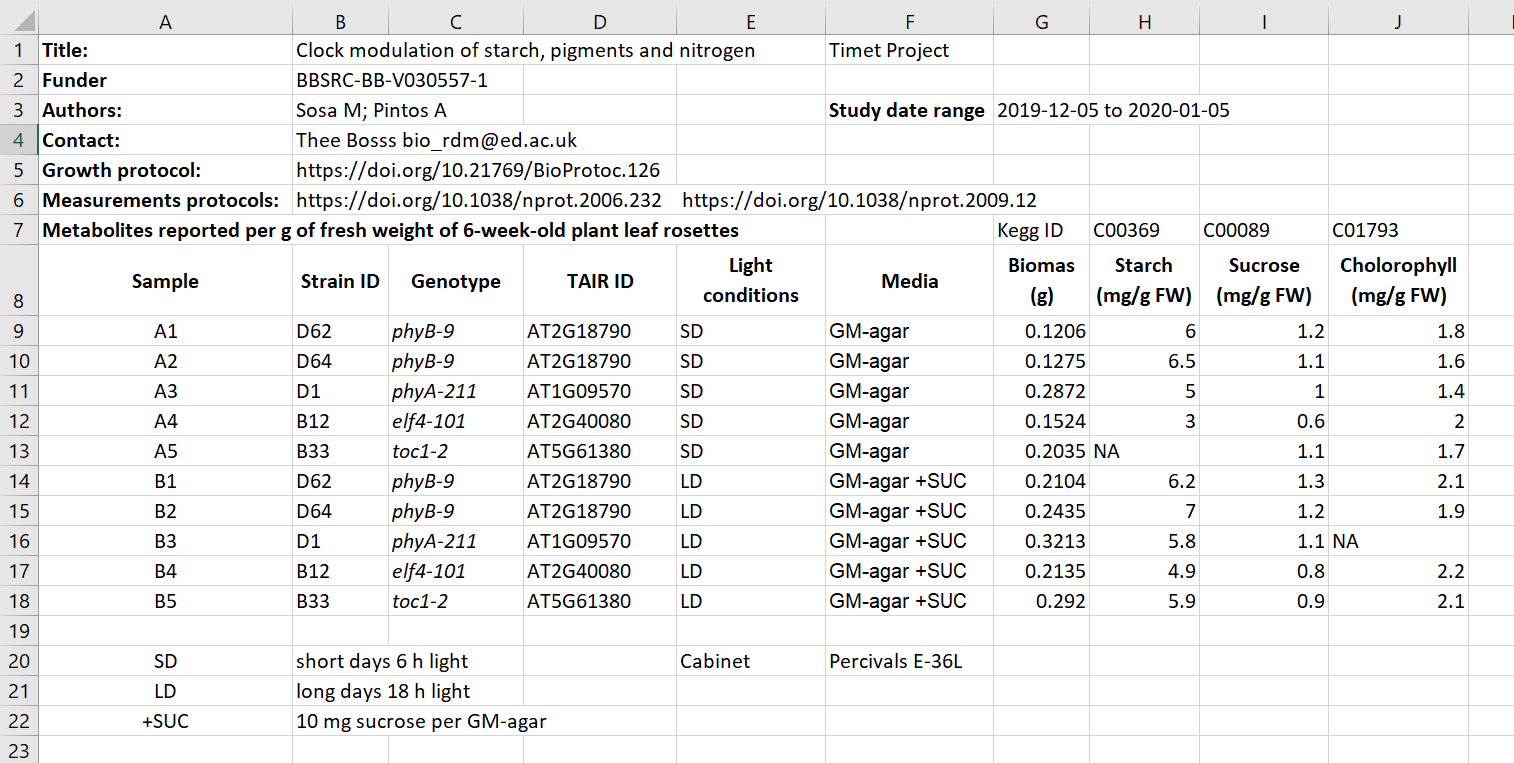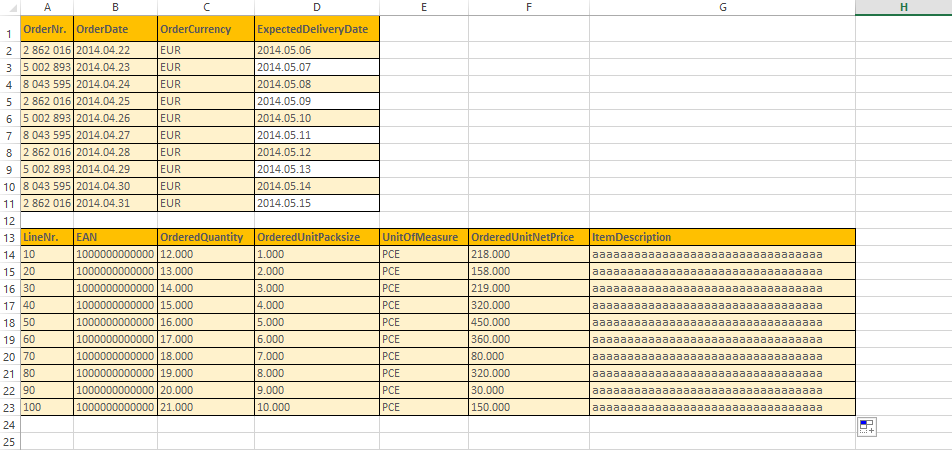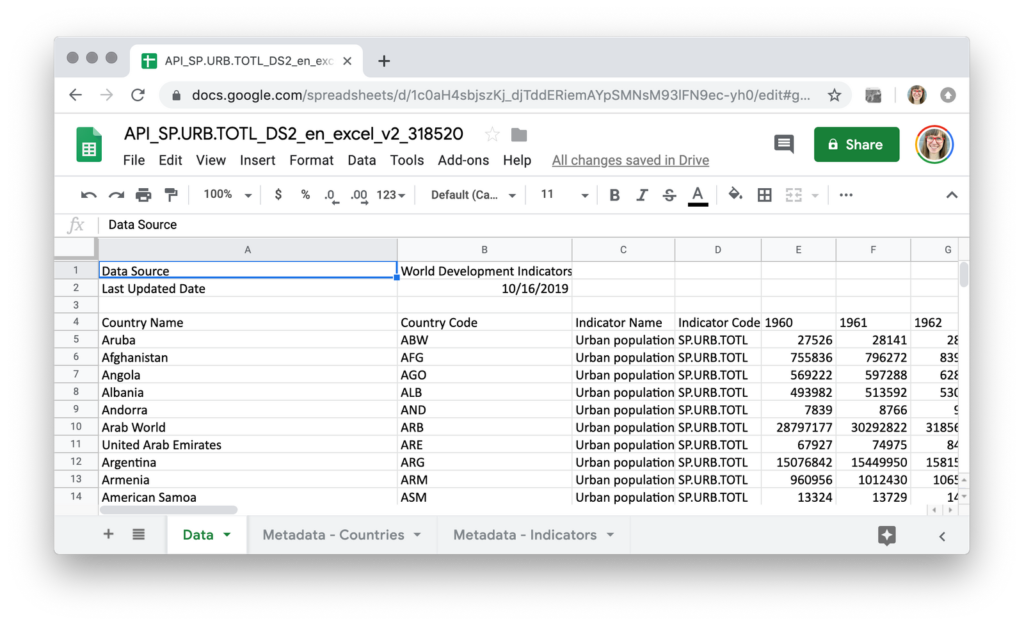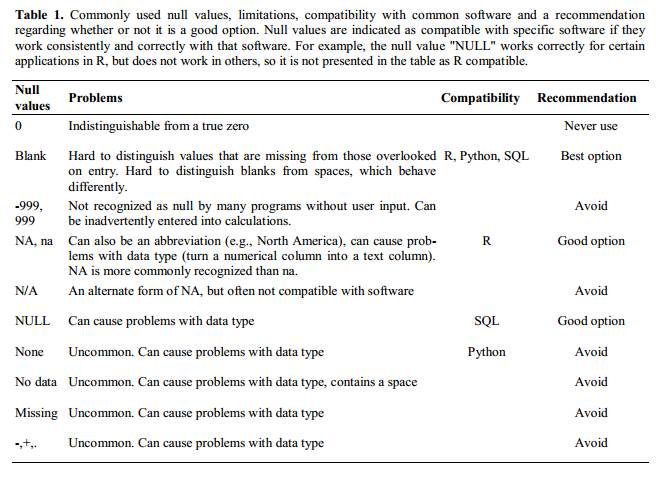It is data about your data
Describes what your data is
Important for making your data FAIR
2023-11-15
What is metadata?
What is metadata?

Metadata example
Here’s an example of good metadata
Types of metadata
- Administrative metadata
- assigned to data before it’s creation or collection
- E.g. funder, project collaborators, principle investigator, etc.
- Descriptive or citation metadata
- data that helps people find your data or resource
- E.g. keywords, persistent identifier, abstract, authors, etc.
- Structural metadata
- How the data was collected/created and how it’s structured
- E.g. Sampling procedure, sample size, variables, units, collection method, etc.
Identify different metadata types

Activity: Identify what metadata you need
What kinds of data do (will) you have for your project?
Activity: Identify what metadata you need
Activity: Identify what metadata you need
- What types of metadata do you need?
Common spreadsheet errors
- Using multiple tables
Common spreadsheet errors

Common spreadsheet errors
- Using multiple tabs
- Sometimes these can be missed
- Difficult to use in code
Common spreadsheet errors

Common spreadsheet errors
Not filling in zeros
* Difference between a zero and a blank cell
Using problematic null values
Common spreadsheet errors

Common spreadsheet errors
Using formatting to convey information organizing data
- Highlighting cells
Common spreadsheet errors

Common spreadsheet errors
Using formatting to convey information organizing data
- Merging cells
Common spreadsheet errors

Common spreadsheet errors
- Placing comments or units in cells
- E.g. 0.123g
- Having more than one piece of information in a cell
- “ID=g24074.t1;Parent=g24074;Alias=g24074.t1;gene=Dupd1;gene_id=Dupd1.g1;description=Similar to Dual specificity protein phosphatase [Sphaeramia orbicularis];Dbxref=InterPro:IPR000387,InterPro:IPR016130,InterPro:IPR020405,InterPro:IPR020422,InterPro:IPR029021,PANTHER:PTHR45682,PANTHER:PTHR45682:SF2,PRINTS:PR01908,PRINTS:PR01909,PFAM:PF00782,ProSitePatterns:PS00383,ProSiteProfiles:PS50054,ProSiteProfiles:PS50056,SMART:SM00195,SUPERFAMILY:SSF52799;Ontology_term=GO:0004725,GO:0016311,GO:0016791;”
- Inconsistent values
- E.g. Using E. Coli, Escherichia coli, and Ecoli
- Using special characters, spaces, or numbers in column names
Tidy data
What makes data tidy?
1. Every column is a variable 2. Every row is an observation 3. Ever cell is a single value
Real life example
Wrangling plate reader data
Practice making tidy data
- In your group discuss what is wrong with the format of your data
- Create a repository for your metadata project
- Clone the repository to your local git
- Delegate jobs to group members:
- write readme describing the data
- reshape the data into a tidy form and change to csv
- read the data into R making sure it is in the right form
- Each role will push changes to a new branch of the main branch
- As a group pull the changes merging the branches to the main branch
Conclusion
- What kind of metadata do you need for your project?
- How will this metadata be organized in your directory?
- Create metadata for your project data for next class